Geothermal Hydropower

How does hydropower compare to other forms of alternative energy ?
Hydropower, a form of renewable energy that uses water flow or fall to generate electricity, is compared with other alternative energies like solar, wind, geothermal, and biomass across various aspects: 1. **Cost-Effectiveness**: Hydropower has high setup costs but low operational expenses, while solar and wind require significant upfront investment for installation but have lower running costs. Geothermal can be expensive initially due to drilling and exploration, and biomass costs vary based on the type and conversion technology used. 2. **Reliability and Consistency**: Hydropower offers consistent power generation as long as water flow is maintained. Solar power's reliability depends on sunlight, wind power on wind patterns, geothermal power provides consistent power once established, and biomass needs a steady supply of material for consistency. 3. **Environmental Impact**: Hydropower can impact habitats and water temperature but produces no direct emissions. Solar power has a relatively low environmental impact during operation but considers the manufacturing process. Wind power is generally environmentally friendly, geothermal power releases fewer pollutants than fossil fuels, and biomass burning releases CO2 but is carbon-neutral. 4. **Energy Storage and Grid Integration**: Hydropower offers excellent energy storage capabilities. Solar and wind powers require energy storage solutions. Geothermal power doesn't typically require energy storage, while biomass can be stored and used as needed. 5. **Scalability and Deployment Speed**: Large-scale hydropower projects can take many years to build, whereas small-scale or run-of-river systems can be deployed faster. Solar power can scale from small residential systems to large farms, and wind farms can be built relatively quickly. Geothermal power's scalability depends on the resource available, and deployment can be slow due to requirements. Biomass ranges from small community digesters to larger power plants, with scalability being moderate.

What advances have been made in hydropower technology to minimize environmental impact ?
Hydropower technology has seen significant advances to minimize its environmental impact, including run-of-river designs, low-head turbines, fish-friendly turbines, pulse generating technology, eco-dam designs, integrated renewable energy systems, digital monitoring and control systems, retrofitting older dams, environmental impact assessments, and community involvement and transparency. These developments aim to make hydropower more sustainable by balancing clean energy production with the preservation of ecosystems.

What are some examples of recent technological advancements in renewable energy sources ?
Renewable energy sources have been gaining momentum in recent years due to the increasing awareness of climate change and the need for sustainable alternatives to fossil fuels. Here are some examples of recent technological advancements in this field: - Solar Energy: Perovskite solar cells, bifacial solar panels, concentrated solar power (CSP) systems with efficient heat transfer fluids and storage systems. - Wind Energy: Floating wind turbines designed for deep waters, smart grid integration with improved forecasting techniques, demand response programs, and energy storage solutions. - Hydropower: Run-of-river systems that minimize environmental impact by utilizing natural river flow, low head hydropower installed in existing water infrastructure without significant modifications. - Geothermal Energy: Enhanced geothermal systems (EGS) with improved drilling techniques and efficient heat exchangers, low-temperature geothermal heat pumps harnessing warmth from Earth's surface even in colder climates. - Biomass Energy: Anaerobic digestion process breaking down organic matter to produce biogas for electricity generation or as a natural gas substitute, torrefaction converting biomass into coal-like substance called biocoal with higher energy density and potential applications in replacing coal in power plants and industrial processes.

Is geothermal energy a practical solution for colder climates ?
Geothermal energy is a renewable source of energy that comes from the heat generated by the Earth's core. It has been used for centuries in various forms, such as hot springs and geysers. In recent years, there has been an increasing interest in using geothermal energy as an alternative to fossil fuels. But is it a practical solution for colder climates? Let's explore this question further. Advantages of Geothermal Energy in Colder Climates: 1. Reliable Source of Energy: Unlike other renewable sources like solar or wind power, which are dependent on weather conditions, geothermal energy can be harnessed all year round, regardless of the temperature outside. This makes it an ideal source of energy for colder climates where there may be long periods of ice and snow. 2. Low Emissions: Compared to fossil fuels, geothermal power plants produce significantly fewer greenhouse gases and air pollutants. This makes it an environmentally friendly option for communities looking to reduce their carbon footprint. 3. Cost-Effectiveness: While the initial cost of setting up a geothermal power plant can be high, the long-term costs are relatively low compared to other sources of energy. Once established, geothermal power plants require little maintenance and have a lifespan of several decades. This makes it a cost-effective solution for colder climates where energy demands are high due to heating needs. Challenges of Geothermal Energy in Colder Climates: 1. Limited Availability: One of the main challenges of using geothermal energy in colder climates is its limited availability. Not all areas have access to geothermal resources, and even those that do may not have enough heat to generate significant amounts of energy. This means that while geothermal energy can be a practical solution for some areas, it may not be feasible for others. 2. High Initial Costs: As mentioned earlier, the initial cost of setting up a geothermal power plant can be high. This can be a barrier for communities with limited financial resources or those without access to government subsidies or grants. Additionally, drilling equipment and expertise may need to be imported from other countries, adding to the overall cost. 3. Environmental Impact: While geothermal energy is generally considered to be environmentally friendly, there are still some potential impacts associated with its use. For example, drilling activities can disturb wildlife habitats and disrupt local ecosystems. Additionally, if not managed properly, geothermal power plants can release harmful chemicals into the atmosphere or nearby water sources. Conclusion: In conclusion, geothermal energy can be a practical solution for colder climates under certain conditions. Its reliability, low emissions, and cost-effectiveness make it an attractive option for communities looking to reduce their reliance on fossil fuels. However, its limited availability, high initial costs, and potential environmental impacts must also be considered before making any decisions about implementing geothermal energy projects in colder climates.

Can geothermal energy be a major source of power in colder climates ?
Geothermal energy, derived from the Earth's natural heat, can be a significant power source in colder climates. Key considerations include the availability of geothermal resources, technology and infrastructure, economic feasibility, environmental impact, and societal and regulatory factors. Challenges such as permafrost and public acceptance can be addressed through careful planning, technological innovation, and effective policy measures. If these factors are favorably aligned, geothermal energy could play a significant role in meeting the energy demands of colder regions while contributing to global efforts to combat climate change.
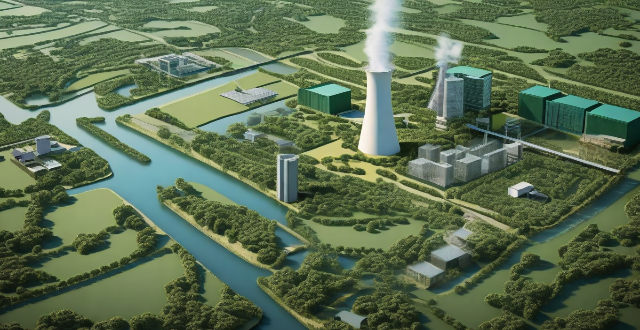
How does geothermal energy work and is it a viable alternative energy source ?
Geothermal energy is a renewable and sustainable source of energy that harnesses the natural heat from within the Earth's crust. This energy is obtained by drilling wells into the Earth's crust, where the heat is transferred to water or another fluid in a heat exchanger. The heated fluid then spins a turbine to generate electricity. There are three main types of geothermal power plants: dry steam, flash steam, and binary cycle. While geothermal energy has many benefits, including being renewable, cost-effective, and abundant in certain areas, it also comes with high upfront costs and location limitations. Additionally, there are environmental impacts associated with its use, such as potential contributions to earthquakes and impacts on local ecosystems. Despite these challenges, geothermal energy remains a valuable addition to our portfolio of renewable energy sources.

What are some innovative ways that people are using to generate their own alternative energy at home ?
The provided text discusses innovative ways to generate alternative energy at home. It mentions various methods such as solar power (solar panels, solar water heaters, solar chargers), wind power (home wind turbines, vertical axis wind turbines), hydropower (micro hydro systems, rainwater harvesting), geothermal energy (ground source heat pumps, geothermal water heaters), and biomass energy (wood burning stoves, biogas digesters). The conclusion highlights the potential of these methods in reducing a household's carbon footprint and contributing to a sustainable future.

What is the role of renewable energy sources in energy-efficient buildings ?
Renewable energy sources play a crucial role in the construction and operation of energy-efficient buildings, providing clean, sustainable power that reduces reliance on fossil fuels and helps mitigate climate change. Solar energy is one of the most popular renewable energy sources used in energy-efficient buildings, harnessing the power of the sun to generate electricity or heat water for use in buildings. Wind energy converts the kinetic energy of wind into electricity, which can then be used to power buildings. Geothermal energy involves harnessing the heat from the earth's core to provide heating and cooling for buildings. Biomass energy uses organic materials such as wood chips, crop waste, and animal manure to generate heat and electricity for buildings. Hydropower involves using the energy of moving water to generate electricity. Incorporating these technologies into building designs and operations can create more sustainable and environmentally friendly structures that benefit both people and the planet.
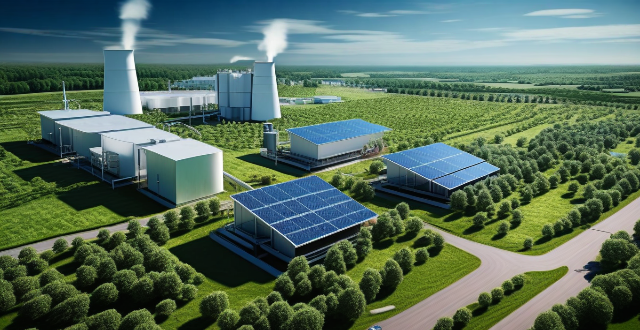
How do renewable energy sources contribute to industrial energy efficiency improvements ?
Renewable energy sources like solar, wind, hydropower, biomass, and geothermal power play a crucial role in enhancing industrial energy efficiency. They offer benefits such as reduced greenhouse gas emissions, lower operating costs, and increased reliability. By adopting these technologies, businesses can reduce their reliance on fossil fuels, increase energy independence, and contribute to a more sustainable future.
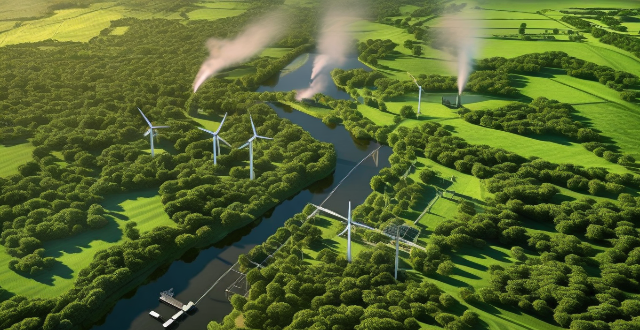
What are the most common types of renewable energy sources ?
Renewable energy sources are naturally replenished and provide a sustainable way to generate power without depleting the Earth's natural resources or contributing to climate change. Solar energy is harnessed through photovoltaic systems, solar water heaters, and concentrating solar power. Wind energy is captured by onshore and offshore wind turbines. Hydropower is generated through dam-based and run-of-river systems. Geothermal energy is tapped into via dry steam, flash steam, and binary cycle power plants. Bioenergy includes biomass combustion, anaerobic digestion, and biofuels. These sources offer clean alternatives to fossil fuels and play a crucial role in reducing greenhouse gas emissions.

How has the Clean Energy Revolution affected the job market ?
The clean energy revolution has created new job opportunities across various sectors, including solar, wind, geothermal, hydropower, and bioenergy. The industry requires specialized skills in engineering, manufacturing, maintenance, sales, marketing, policy analysis, and advocacy. The clean energy revolution has also transformed existing industries by integrating renewable energy sources into their operations. The shift towards renewable energy sources is expected to continue, requiring individuals to acquire the necessary skills and knowledge to thrive in this rapidly evolving landscape.

What are the most promising renewable energy technologies for reducing carbon emissions ?
Renewable energy technologies are crucial for reducing carbon emissions and combating climate change. They harness natural resources such as wind, solar, hydro, geothermal, and biomass to produce electricity or heat without emitting greenhouse gases. This article discusses the most promising renewable energy technologies for reducing carbon emissions. Solar energy can be generated through photovoltaics (PV) or concentrated solar power (CSP). Wind energy is growing rapidly due to its low cost and minimal environmental impact. Hydropower is a significant source of clean power but has environmental concerns. Geothermal energy has a high capacity factor but limited availability. Bioenergy helps reduce dependence on fossil fuels but requires careful consideration of land use changes. Wave and tidal energy have immense potential but are still in early development stages. Overall, these technologies offer unique benefits and challenges for creating a sustainable future.

What are some innovative ways to generate sustainable energy ?
The article discusses various innovative ways to generate sustainable energy. These methods include solar power, wind power, hydropower, geothermal energy, biomass energy, and wave energy, each with their unique techniques and systems.

How efficient is wind energy compared to other renewable sources ?
The efficiency of wind energy is influenced by factors such as capacity factor, technological advancements, and site specificity. Compared to other renewable sources like solar, hydropower, geothermal, biomass, and tidal/wave energy, wind energy has a relatively high capacity factor ranging from 35% to 45%. Technological improvements have increased the efficiency of wind turbines over the years, making them more productive. However, the efficiency of wind farms is highly dependent on the location, with optimal sites achieving higher efficiency rates. In conclusion, wind energy compares favorably to other renewable sources in terms of efficiency, but the choice between different renewable energies often depends on local conditions, economic factors, and technological advancements.
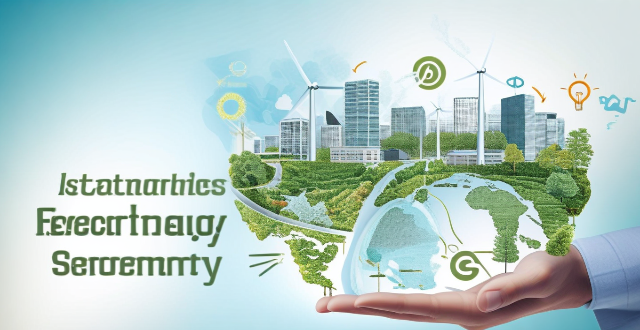
What are the main sources of sustainable energy ?
The text discusses the various main sources of sustainable energy, including solar energy, wind energy, hydropower, geothermal energy, bioenergy, tidal and wave energy, and hydrogen energy. It also highlights the importance of adopting sustainable energy for environmental impact, economic benefits, energy security, and health considerations. The transition to sustainable energy requires investment, policy support, and technological innovation.

What is the current state of renewable energy research and development ?
Renewable energy research and development (R&D) is a rapidly evolving field that aims to create sustainable alternatives to traditional fossil fuels. The current state of renewable energy R&D can be characterized by several key trends: ### **Advances in Technology** - Solar energy research focuses on improving the efficiency of photovoltaic cells and concentrated solar power systems. - Wind energy technology is advancing with the development of offshore wind turbines and material innovations for turbine blades. - Hydropower research explores ways to harness energy from small streams and rivers without ecological harm, as well as improvements to pumped storage systems. - Geothermal energy is expanding beyond natural hotspots through enhanced geothermal systems and binary cycle power plants. ### **Integration with Grid Systems** - Smart grids enable better management of consumer demand and integrate distributed energy resources like rooftop solar panels and small wind turbines. - Energy storage solutions, such as battery technologies and pumped hydro storage, are being refined for improved efficiency and environmental impact. ### **Policy and Economic Drivers** - Government incentives like tax credits and feed-in tariffs encourage renewable energy adoption. - Carbon pricing mechanisms, including emissions trading schemes and carbon taxes, create financial incentives for companies to reduce their greenhouse gas emissions. ### **Environmental Impact and Sustainability** - Lifecycle analysis examines the manufacturing processes and end-of-life management of renewable energy equipment to minimize environmental footprint. - Biodiversity conservation efforts aim to mitigate the impact of renewable energy infrastructure on wildlife habitats and ecosystems. As technological innovation, grid integration advancements, supportive policies, and consideration for environmental impact continue, renewable energy is expected to play an increasingly vital role in global energy supply while helping to mitigate climate change.
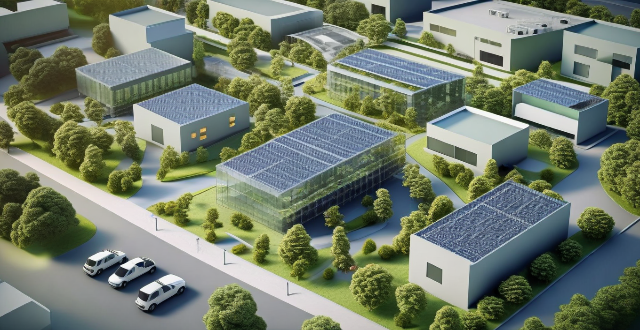
What innovative technologies are being developed to mitigate the effects of global warming ?
Innovative technologies are being developed to mitigate global warming and reduce greenhouse gas emissions. These include renewable energy sources, carbon capture and storage, nuclear fusion, electric vehicles, smart grid technology, afforestation and reforestation, energy efficiency improvements, biofuels and bioenergy, green building design, and climate engineering. Each of these technologies offers unique benefits and challenges in addressing the pressing issue of global warming.

What are the most promising alternative energy sources for the future ?
The world is in urgent need of sustainable and renewable energy sources as it grapples with climate change and the depletion of fossil fuels. Some of the most promising alternative energy sources for the future include solar energy, wind energy, hydropower, geothermal energy, biomass energy, and tidal energy. Solar energy is abundant and renewable, with no greenhouse gas emissions during operation. It can be installed on rooftops or in large solar farms, and technological advancements have made it more efficient and affordable. However, it faces challenges such as intermittent power generation, high initial installation costs, land use concerns, and efficiency drops in colder climates. Wind energy is also renewable and abundant, with no greenhouse gas emissions during operation. It can be installed on land or offshore, and technological advancements have made it more efficient and affordable. However, it faces challenges such as intermittent power generation, noise pollution from turbines, impact on wildlife, and visual impact on landscapes. Hydropower is a reliable and renewable source of energy that can provide baseload power to the grid. It can also be combined with other renewable sources for energy storage. However, it faces challenges such as environmental impact on aquatic ecosystems, limited potential for expansion due to suitable sites being scarce, seasonal variability in water flow affecting power generation, and large upfront capital costs for construction. Geothermal energy is a reliable and renewable source of energy that can provide baseload power to the grid. It can also be used for heating and cooling purposes as well as electricity generation. However, it faces challenges such as limited to specific geographic locations with geothermal resources, environmental impacts such as water usage and land subsidence, high initial installation costs, and potential for induced seismicity in certain areas. Biomass energy is a renewable and abundant source of energy that can be used for both electricity generation and heat production. It can help reduce waste by utilizing organic materials that would otherwise be discarded and can provide jobs in rural areas through the collection and processing of biomass materials. However, it faces challenges such as emissions of greenhouse gases and air pollutants during combustion, competition with food crops for arable land and water resources, high transportation costs for biomass materials over long distances, and concerns about sustainability and carbon neutrality of some biomass sources. Tidal energy is a predictable and reliable source of energy due to the regularity of tides. It can provide baseload power to the grid when combined with other renewable sources like wind or solar energy and has minimal visual impact compared to other renewable sources like wind turbines or solar panels. However, it faces challenges such as limited to coastal areas with significant tidal ranges or fast-moving tidal currents, high initial installation costs for tidal turbines or barrages, potential environmental impacts on marine ecosystems and navigation routes, and technological challenges in designing equipment capable of withstanding harsh ocean conditions over time.

What role do renewable energies play in the energy transition process ?
The role of renewable energies in the energy transition process is to help decarbonize the power sector, promote sustainability, provide economic benefits, improve energy security, and enhance public health. Renewable sources like solar, wind, hydropower, and geothermal emit little to no greenhouse gases during operation, making them crucial for reducing carbon emissions associated with electricity generation. These sources are also sustainable as they are replenished naturally and do not deplete over time. Investing in renewable energies can lead to job creation, technological innovation, and cost savings in the long run. By diversifying energy sources, countries can reduce their dependence on imported fuels and enhance their energy security. Additionally, renewable energies have lower environmental impacts than fossil fuels, leading to improved air quality and public health benefits.

Is it ethical to continue using fossil fuels given their negative impact on the environment ?
The text discusses the ethical implications of continuing to use fossil fuels given their negative impact on the environment. It highlights the harmful pollutants released by burning fossil fuels, including carbon dioxide, sulfur dioxide, nitrogen oxides, and particulate matter. These pollutants contribute to global warming, acid rain, and air pollution, which have negative effects on human health, biodiversity, and the environment. The text suggests that we have a moral obligation to protect the environment for future generations and raises questions about environmental justice and equity. However, some argue that transitioning away from fossil fuels would be too costly and disruptive to economies around the world. The text also explores alternatives to fossil fuels, such as solar power, wind power, hydropower, geothermal energy, and biomass. In conclusion, the text argues that it is ethically questionable to continue using fossil fuels as our primary source of energy and that we should focus on developing and implementing cleaner, renewable sources of energy to mitigate our impact on the environment.
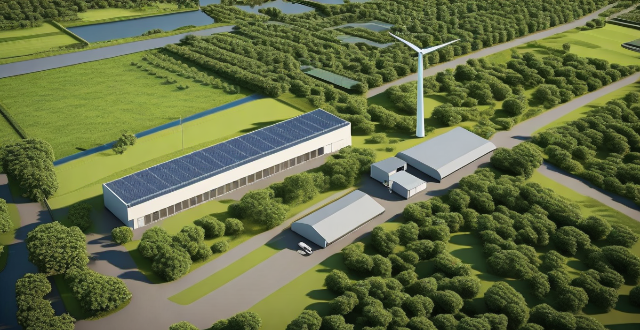
What is the Clean Energy Revolution ?
The Clean Energy Revolution is a global effort to transition from non-renewable to renewable energy sources, driven by concerns over climate change and resource depletion. Key components include the use of solar, wind, hydropower, geothermal, and biomass energy; improvements in energy efficiency across buildings, transportation, and industry; developments in energy storage and smart grids; supportive policies and regulations; and increased public awareness and participation. This revolution offers environmental, economic, health, and security benefits but faces challenges related to cost, infrastructure, policy consistency, and technological innovation. Overall, it aims to create a sustainable future with reduced greenhouse gas emissions and improved quality of life.

What are the most effective ways to reduce greenhouse gas emissions ?
Climate change is a pressing issue caused by greenhouse gas emissions. Reducing these emissions is crucial for mitigating global warming. Effective ways to reduce emissions include utilizing renewable energy sources like solar, wind, hydropower, and geothermal energy; implementing energy efficiency measures in buildings, appliances, and transportation; adopting sustainable agriculture practices such as crop rotation and livestock management; engaging in forestry practices like afforestation and selective logging; and managing waste through composting, recycling, and waste-to-energy technologies. These methods can significantly contribute to reducing greenhouse gas emissions and addressing climate change.

How can climate financing help developing countries ?
Climate financing is essential for developing countries to adapt to and mitigate climate change. It funds infrastructure projects, capacity building, renewable energy, sustainable land use, and research & development. These efforts help build resilient economies and reduce environmental impact.

What are some successful examples of sustainable development projects ?
Successful sustainable development projects aim to meet the needs of the present without compromising future generations. Examples include the Great Green Wall for the Sahara and the Sahel Initiative, the Danish Wind Energy Revolution, Solar Power in India, Copenhagen's Bike Culture, and Renewable Energy in Costa Rica. These projects focus on balancing economic, social, and environmental considerations and demonstrate positive impacts on both the environment and society.

How does water conservation relate to overall energy efficiency and emission reduction ?
Water conservation is crucial for energy efficiency and emission reduction. It reduces the need for energy-intensive water treatment, distribution, and usage in various sectors like agriculture, industry, and households. Conserving water also maintains renewable energy sources like hydropower and reduces the environmental footprint of energy production. Therefore, water conservation contributes to a more sustainable future with efficient energy use and protection from climate change effects.

What role do renewable energy sources play in combating climate change ?
Renewable energy sources play a crucial role in combating climate change by reducing greenhouse gas emissions, promoting sustainable development, creating job opportunities, and enhancing energy security. Solar, wind, hydropower, and other renewable energy sources are clean and sustainable alternatives to fossil fuels. By investing in these sources, we can slow down the rate of climate change and create a cleaner, more sustainable future for all.

How do renewable energy policies vary across different countries and regions ?
Renewable energy policies globally are shaped by economic, environmental, and political factors. Europe leads in renewable adoption with Germany's Energiewende, Spain's feed-in tariffs (FiTs), and Denmark aiming for fossil fuel independence. North America uses state-level RPS, tax incentives, and market-driven approaches. Asia sees rapid growth with China's government support and India's ambitious targets. Africa focuses on access to electricity through projects like South Africa's REIPPPP. Latin America balances economic development and sustainability, with Brazil expanding into solar and Mexico deregulating its electricity market. Policies include FiTs, quota systems, auctions, and financial incentives, varying by region's resources and priorities.
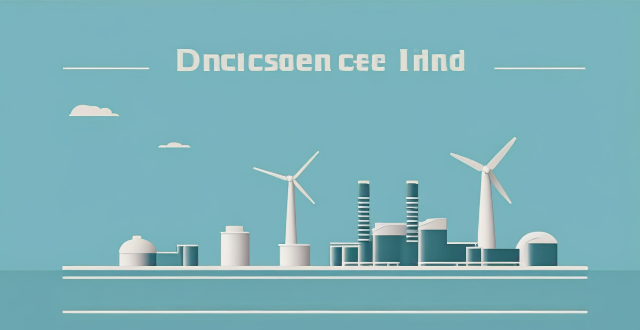
How does the efficiency of renewable energy technologies compare to traditional fossil fuels ?
The text discusses the efficiency comparison between renewable energy technologies and fossil fuels. Renewable sources, such as solar, wind, hydroelectric, geothermal, and biomass, have varying efficiency rates, with hydroelectric power being particularly efficient at up to 90%. Meanwhile, fossil fuels like coal, oil, and natural gas generally show higher efficiencies, especially natural gas plants which can exceed 60% efficiency. Despite their lower efficiencies, renewables offer significant advantages in sustainability and reduced environmental impact, making them increasingly competitive alternatives to fossil fuels.

What are some examples of successful clean energy investments ?
Investing in clean energy is becoming increasingly popular due to rising awareness of the need for sustainability. Successful investments include solar power, wind power, geothermal energy, hydroelectric power, bioenergy, electric vehicles, energy efficiency measures, and smart grid technology. These investments not only combat climate change but also create new economic opportunities and jobs.